The measurement of fluvial sediments is often necessary to complement sediment yield and sediment transport studies.
- The accuracy of the measurement depends on the equipment and techniques, but also on the application of basic principles of sediment transport.
- As sediment enters a stream, it separates itself into bed-material load and wash load.
- In turn, the bed-material loal is transported either as bed load or suspended load.
- The suspended bed-material load plus the wash load constitutes the total suspended load of the stream or river.
- The term "sampled suspended sediment discharge" is used to describe the fraction of suspended load that can be sampled with available equipment.
- It excludes the "unsampled suspended sediment discharge," i.e., the fraction of suspended load that is carried too close to the streambed to be effectively sampled.
- The suspended sediment discharge is the sum of sampled and unsampled suspended sediment discharges.
SEDIMENT-SAMPLING EQUIPMENT
- Sediment-sampling equipment can be classified as follows:
- suspended sediment samplers, which measure suspended sediment concentration;
- bed-load samplers, which measure bed load; and
- bed-material samplers, which sample the sediment in the top layer of the streambed.
Suspended sediment samplers
- Suspended sediment samplers can be classified as follows:
- depth-integrating,
- point-integrating,
- single-stage, and
- pumping samplers.
- Depth-integrating samplers accumulate a water-sediment sample in a pint-size milk bottle as they are lowered to the streambed and raised back to the surface at a
uniform rate of transit.
- They are designed so that the velocity in the intake mozzle is nearly equal to the local stream velocity.
- Samples may be collected by wading in a stream, by hand from a suitable support, or mechanically with a cable-and-reel setup.
- The DH-48 depth-integrating suspended wading type sampler is shown below.
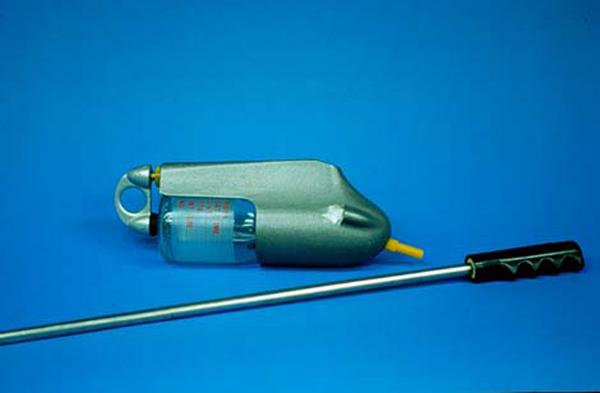
DH-48 depth-integrating suspended wading type sampler.
|
|
- With wading-rod suspension, this sampler is used in shallow streams where the product of flow depth (ft) and mean velocity (fps) does not exceed 10.
- The U.S. DH-59 sampler (24 lb) with handline suspension is used in streams with low velocities but with depths that do not permit samples to be collected by wading.
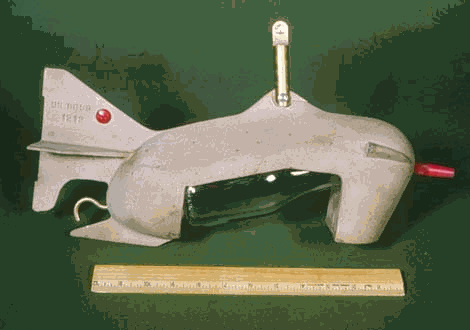
DH-59 depth-integrating suspended hand-line sampler.
|
|
- The U.S. D-49 sampler (62 lb) with cable-and-reel suspension is designed for use in streams beyond the range of hand-operated equipment.
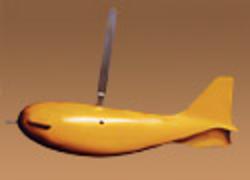
D-49 suspended sediment sampler.
|
|
- Depth-integrating samplers improve sample accuracy and reduce the cost of collecting suspended sediment data.
- Field data of questionable quality.
- Point-integrating samplers accumulate a water-sediment sample at any selected point in a stream.
- A rotary valve is operated by a solenoid to open and close the sampler.
- These samples can also be used to collect depth-integrating samples by moving it through the vertical.
- This permits depth integration in streams that are too deep to be sampled with a depth-integrating sampler.
- The U.S. P-46 and P-61 (100 lb), P-63 (200 lb) and P-50 (300 lb) point-integrating samplers are in current use.
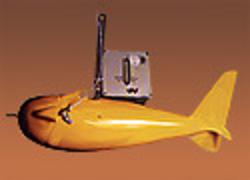
P-61 suspended sediment sampler.
|
|
- The single-stage sampler was developed to obtain suspended sediment data in flashy streams, particularly those located in remote areas.
- The pumping sampler is designed to obtain a continuous record of sediment concentration by sampling at a fixed point
at specific intervals.
- This sampler does not require an operator.
Bed load samplers
- Bed load samplers are of three types:
- basket type,
- pan type, and
- pressure-difference type.
- The basket and pan types canuse an increase in resistance to flow and a reduction in stream velocity at the sampling location.
- The reduction in stream velocity interferes with the rate of bed-load transport, compromising the accuracy of the measurement.
- The pressure-difference bed-load sampler is designed to eliminate the reduction in velocity, increasing accuracy.
- The efficiency of a bedload sampler is the ratio of sampled bed load to that actually transported.
- Efficiency varies with sample type, method of support, particle size, and bed configuration.
- Calibration of bed-load samplers has indicated a mean efficiency of about 45 percent for the basket and pan types, and 70 percent for the
pressure-difference type.
Bed-material samplers
- Bed-material samplers are of three types:
- drag bucket,
- grab bucket, and
- vertical-pipe, or core sampler.
- The drag bucket sampler consists of a weighted section of cylinder with an open mouth and cutting edge.
- As the sampler is dragged upstream along the bed, it collects a sample from the top layer of bed material.
- The grab-bucket smapler is similar to the drag bucket, consisting of a cylinder attached to a rod, and used primarily in shallow streams.
- The core sampler consists of a piece of metal or plastic pipe that can be forced into the stream by hand.
- Generally, the drag-bucket and grab-bucket samplers do not obtain fully representatiove samples because of the loss of fine material.
- The core smapler is satisfactory for use in shallow streams.
- The U.S. BMH-53 sampler consists of a 9-in long 2-in diameter brass or stainless steel pipe with a cutting edge and suction piston attached to a control rod.
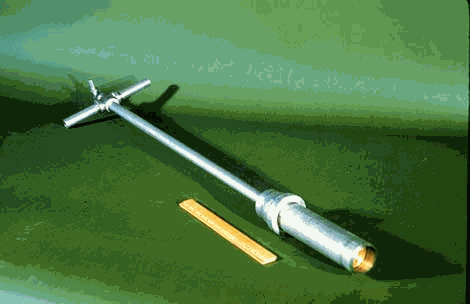
BMH-53 piston-type bed-material hand sampler.
|
|
- The piston is retracted as the cutting edge is forced into the stream bed.
- The partial vaccum that develops in the sampling chamber as the piston is withdrawn assists in holding the sample in the cylinder.
- The sampler can be used only in streams shallow enough to be waded.
- The U.S. BMH-60 bed material sampler with both handline and cable suspension is designed to scoop up a sample of bed sediment
about 3 in wide and 2 in deep.
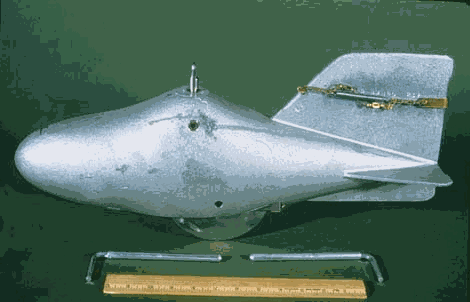
BMH-60 handline bed-material sampler.
|
|
- At the close of sampling, the cutting edge rests againts a rubber stop, which prevents any sediment from being lost.
- The aluminum sampler weighs 30 lb, and the brass sampler 40 lb.
- It is used to collect bed-material-sediment samples in streams with low velocities but with depths beyond the range of the BHM-53 sampler.
- The U.S. BM-54 bed-material sampler (100 lb) with cable suspension is similar in design to the BMH-60 sampler.
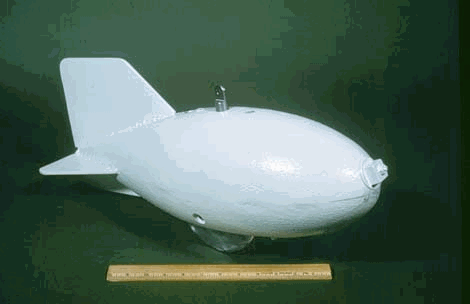
BM-54 bed-material sampler.
|
|
- It is used in deep streams where a heavier sampler is necessary.
New samplers
- The U.S. DH-2 is a
bag-type suspended-sediment/water-quality sampler, capable of being used as a hand-line sampler.
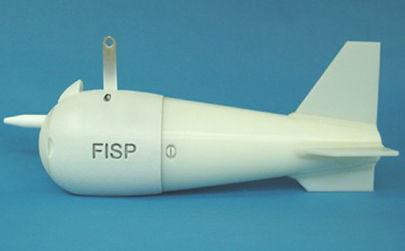
DH-2 suspended sediment sampler.
|
|
- The sampler is designed to meet the requirements of the U.S. Geological Survey for a "clean" suspended-sediment sampler.
- The sampler will collect at least 1-liter of sample isokinetically to 35 ft.
- The U.S. D-99 sampler is a bag-type suspended-sediment/water-quality sampler to be used with a suspension reel.
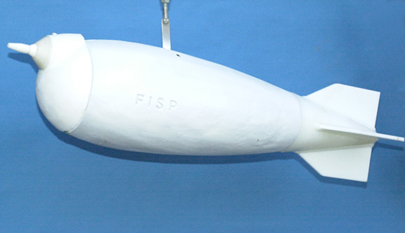
D-99 suspended sediment/water quality sampler.
|
|
- The sampler weighs 285 pounds and has a streamlined body.
- The bronze body casting is coated with plastic to reduce the potential for contamination when used for trace element sampling.
SUSPENDED SEDIMENT DISCHARGE MEASUREMENTS
- Suspended sediment discharge measurements are used to determine sediment concentration at a point in a stream, except for a small unmeasured
zone near the streambed.
- With wading equipment, measurements can generally be made down to within 0.3 ft of the streambed.
- For cable-supported equipment, the unmeasured zone varies between 0.5 and 1 ft, depending on the size of the sampler used.
- Suspended sediment discharge measurements include:
- suspended sediment concentration,
- specific gravity,
- temperature of water-sediment mixture,
- water discharge, and
- distribution of flow in the stream cross section.
- The streamflow depth and velocity and the facilities at the sampling site (bridge, cableway, and so on) have an influence on the choice of sampler.
- Stream depth determines whether hand samplers, such as the DH-48 or DH-49, or a cable suspended sampler, such as the D-49, are used.
- Flow depths over 15 ft require the use of point-integrating samplers to avoid overfilling of the sampling bottles.
- The larger the product of flow depth times mean velocity, the heavier the sampler required for proper measurement.
- The number of sampling verticals depends on the desired accuracy and the variation of sediment concentration across the stream.
- For streams with a stable cross section and essentially uniform sediment concentration across the channel width, sampling at a single vertical is usually
adequate.
- Depth-integrating samplers produce a suspended sediment concentration, which can be measured in parts per million (ppm) and converted to mg/L.
- The suspended sediment discharge is given by the following formula:
in which
Qs = suspended sediment discharge, in tons/day;
Cs = suspended sediment concentration, in mg/L;
Q = water discharge, in cfs; and
The quantity 0.0027 is conversion factor for the indicated units (U.S. Customary).
Measurements of suspended sediment discharge
- There are two techniques to measure suspended sediment discharge:
- EDI, or equal-discharge increment, and
- ETR, or equal-transit rate.
- In the EDI method, sampling is done at the centroid of equal-discharge increments.
- In the ETR method, sampling is done at the centroid of equal-length increments.
- The EDI method requires a knowledge of the lateral distribution of streamflow prior to the selection of sampling verticals.
- The ETR method is applicable to shallow streams where the cross sectional distribution of streamflow is not stable.
- Generally, the EDI method requires fewer sampling verticals that the ETR method.
- However, the ETR method does not require a prior discharge measurement.
- In the EDI method, the suspended sediment concentration is the average obtained from several depth-integrating samples.
- In the ETR method, the suspended sediment concentration is that of a composite sample encompassing several depth-integrating samples.
- The error in suspended sediment discharge provided by the measurement varies with the depth of the unsampled zone and the size distribution of
suspended load.
- The error tends to be smallest in the cases where the vertical concentration gradient in the unsampled zone is small.
- The concentration gradient near the bed is small for silt and clay particles, and large for the coarser sand particles.
- Corrections in sampled suspended-sediment discharge to account for the unsampled portion are usually obtained through appropriate sediment
transport predictors such as the Colby 1957 method or the
Modified Einstein Procedure.
|